Saville Assessment – formerly known as Saville Consulting, is now part of Willis Towers Watson. The company is a global business management consultancy and talent acquisition solution. It is popular for its aptitude assessments and personality questionnaires that are adopted by a large number of companies, from enterprises to small and medium organizations.
Saville assessment aptitude tests can be challenging without proper preparation. It’s important to understand test structure and assessment criteria to perform well on the actual test.
Let’s have a closer look at each type of question and assessment criteria of Saville Assessments in our following article!
Table of Contents
What is a Saville assessment?
Saville Assessments are hiring solutions published by Saville Assessment. They consist of different comprehensive suites of aptitude tests that measure core abilities relevant to various roles within a business or organization.
- Wave® personality questionnaires. There are 7 different questionnaires targeting different groups of candidates in predicting workplace performance and potential.
- Saville aptitude tests. These assessments measure abilities that are core demands for many job roles.
- Saville situational judgment tests. This test group assesses candidates’ suitability for a role with a highly engaging and interactive assessment format.
The tests are available at request and companies can use them across different job levels from entry levels through to managers and executives.
Saville aptitude assessment format
For the aptitude tests, Saville Assessment rolls out two main variations:
- Single Aptitude Tests. This is the longer version of the Saville Aptitude Assessment Test that takes more than 30 minutes to complete. Single Saville aptitude tests target one assessment area (i.e numerical, verbal, abstract reasoning, etc.) at a time.
- Swift Combination Aptitude Tests. This is the shorter version of the Saville tests that measure different areas at a time. It takes candidates less than 30 minutes to finish.
Saville aptitude assessments
The list of single Saville aptitude assessments include
- Saville Verbal Aptitude Test
- Saville Numerical Aptitude Test
- Saville Diagrammatic Aptitude Test
- Saville Abstract Reasoning Test
- Saville Spatial Reasoning Test
- Saville Error Checking Aptitude
Saville verbal aptitude test
Saville verbal aptitude tests present candidates with texts and test-takers must answer given questions according to how they understand the texts.
Savilles offers 8 types of verbal aptitude tests. These aptitude tests are designed with the same purpose of measuring candidates’ ability to comprehend complex written information. However, each assessment has a distinct time limit and targets specific test-takers.
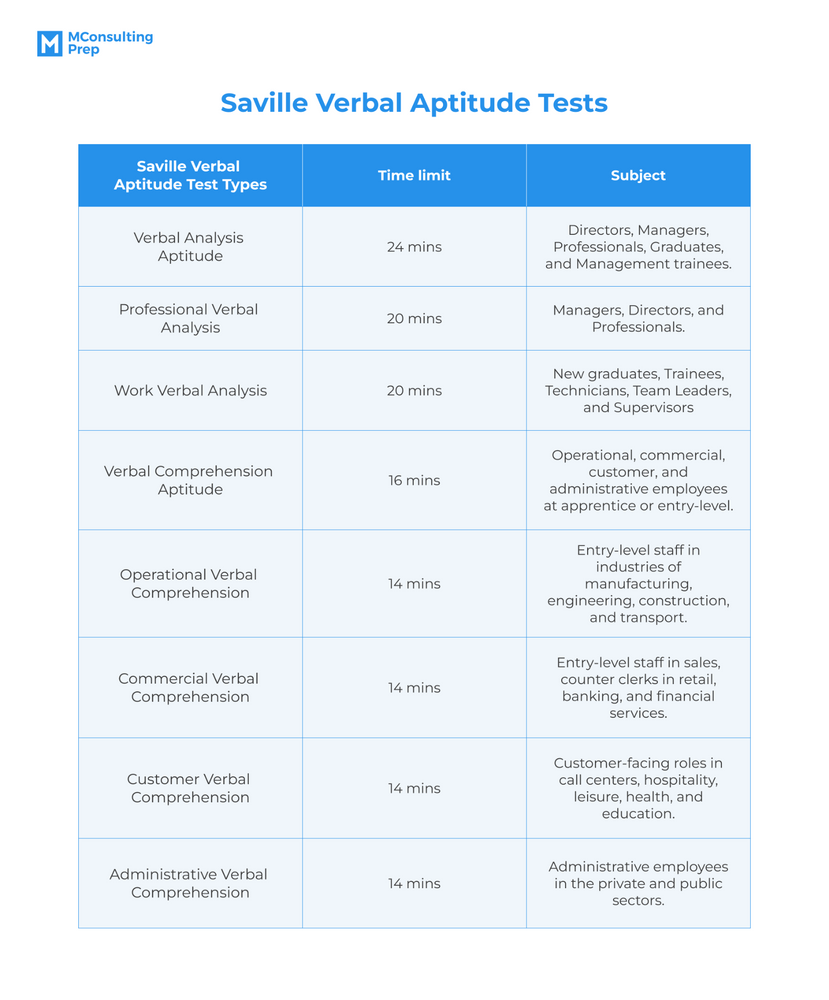
Saville numerical aptitude test
Saville numerical aptitude tests assess candidates’ ability to analyze and interpret statistical, graphical, and numerical data.
Like the verbal test packages, there are 8 different types of Saville numerical aptitude tests.
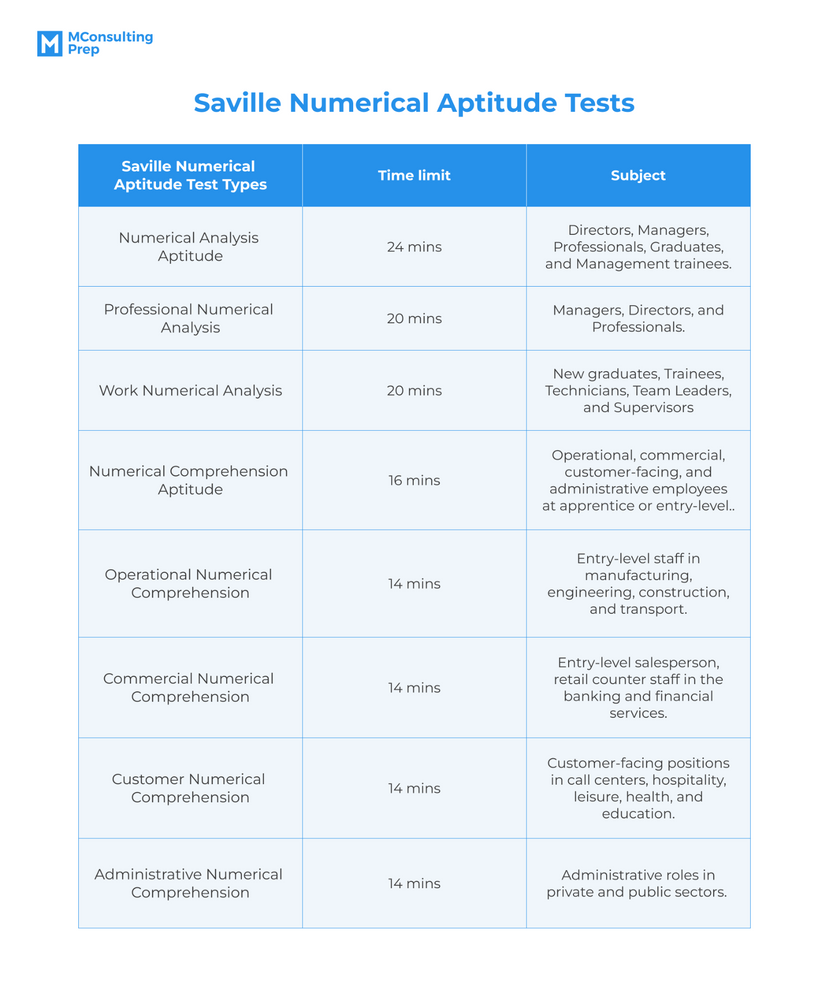
Saville diagrammatic aptitude test
The Diagrammatic aptitude test (also known as the logical or deductive reasoning test) presents a candidate with various diagrams to assess decision-making and sector-relevant ability.
There are five diagrammatic tests with different time limits and target groups.
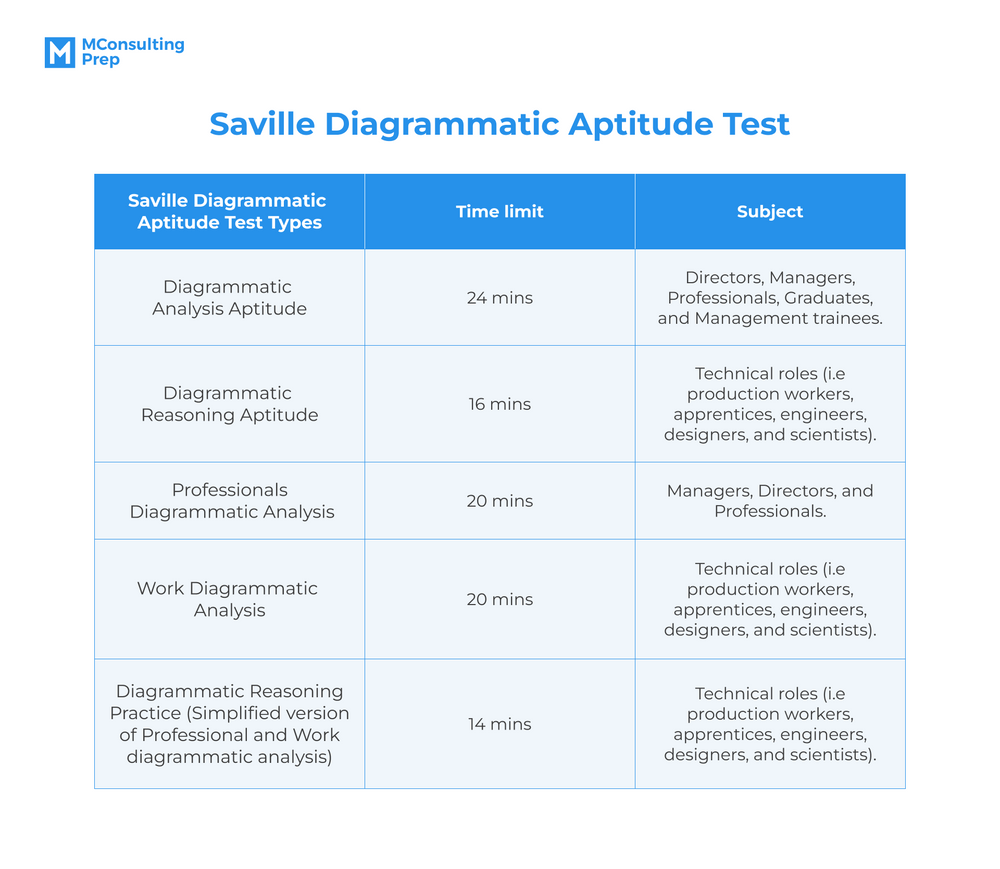
Saville abstract reasoning test
The Saville Abstract reasoning test help businesses and organization measure candidates’ ability to understand shapes, and patterns and identify logical rules connecting them.
Unlike other single Saville test packages, the test publisher offers only one type of abstract reasoning test: the Abstract Reasoning Aptitude.
The test has a time limit of 16 minutes and is made suitable for various roles across different job levels: from directors and managers to fresh graduates and management trainees.
Saville spatial reasoning test
Saville Diagrammatic Aptitude Test evaluates how candidates adopt their spatial judgment in solving transforming problems while eyeing for errors and inconsistencies.
There are two types of Saville diagrammatic aptitude tests.
- Spatial Reasoning Aptitude. It is an 8-minute assessment that is designed for technical positions (i.e production workers, apprentices, engineers, designers, and scientists).
- Practical Spatial Aptitude. It is a 7-minute assessment that is also designed for technical positions (i.e production workers, apprentices, engineers, designers, and scientists).
Saville error checking aptitude
Saville Error Checking Aptitude tests measure the ability to identify verbal, numerical, and coding errors. The test presents candidates with two data sets – one of which contains mistakes that participants must filter out.
Saville assessment offers 5 types of error-checking tests with different target groups and time limits.
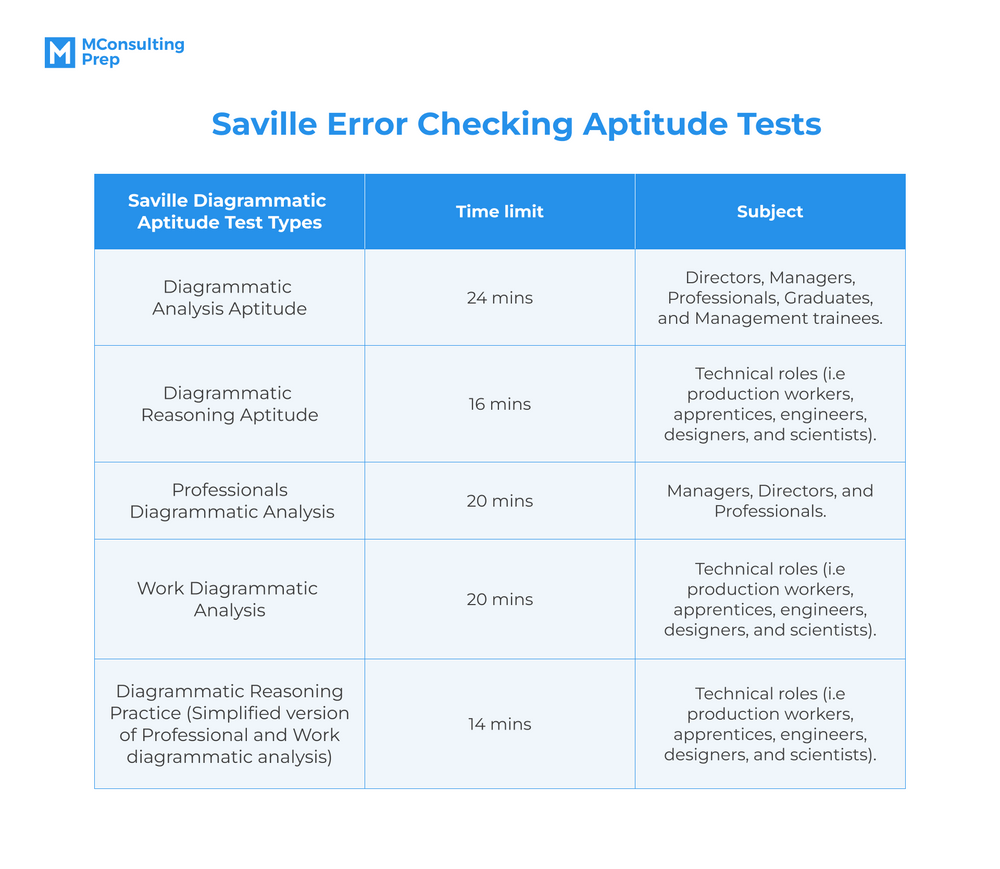
Saville Swift Combination tests
Saville Assessment offers 6 different types of Swift Combinations including
- Swift Analysis Aptitude Range
- Swift Comprehension Aptitude Range
- Swift Technical Aptitude Range
- Swift Apprentice Aptitude
- Swift Global Aptitude
- Swift Executive Aptitude
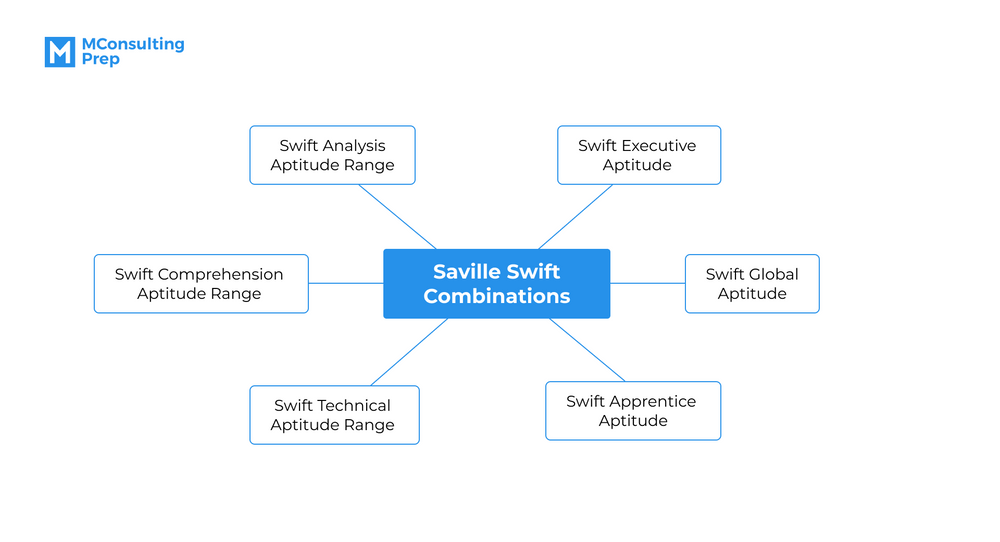
On each screen, there will be one question with the presentation of a countdown clock on the top-right section for candidates to keep track of the time limit.
Swift Analysis Aptitude range
This assessment covers three popular combinations for measuring candidate groups of graduates, management trainees, managers, professionals, and directors.
A combination of this type includes 2 to 3 aptitude tests depending on the hiring needs of employers. It often consists of verbal, numerical, diagrammatic, and abstract reasoning tests that take between 18-24 minutes to complete.
Swift Comprehension Aptitude range
This combination range consists of two common assessments for evaluating candidates applying for administrative roles, customer service roles, operational roles, and commercial roles.
It covers 2 to 3 aptitude tests that take from 9 minutes and a half to 16 minutes to complete. Assessment areas include verbal, numerical, and error checking.
Swift Technical Aptitude range
This test range focuses on measuring core aptitudes that are demanded for the success of technical roles such as production workers, engineers, designers, and scientists.
It is a 10-minute assessment that includes questions of spatial, mechanical, and diagrammatic reasoning.
Swift Apprentice Aptitude
This unique assessment combination is designed to comprehensively and thoroughly measure key aptitudes required for job training and apprenticeship schemes.
It takes candidates under 20 minutes to sit through a test range of 6 aptitude areas covering verbal, numerical, error checking, spatial reasoning, mechanical reasoning, and diagrammatic reasoning.
Swift Global Aptitude
This interactive test range measures the abilities of candidates to think abstractly, reason, and solve problems quickly, with the independence of previous knowledge.
Candidates have 12 minutes to complete a test combination of numerical reasoning, abstract reasoning, and memory recall. The test is presented in a highly visual format that is suitable for international applications.
Swift Executive Aptitude
The executive combination helps measure the critical aptitudes of candidates signing up for senior management and leadership positions.
It is an 18-minute assessment targeting the measurement of numerical aptitude, verbal aptitude, and abstract reasoning.
Saville assessments question examples
Verbal analysis questions
Passage: Consumer Trends
Sticking to traditional eating times and formal eating habits is no longer the norm for most people. The prevalence of eating on the go, both snacks, and meals, is increasing significantly. The three meals a day maxim no longer holds true because more consumers are eating outside of the home and at times to suit their lifestyles.
Breakfast, in particular, is now more commonly skipped and those who do eat breakfast are taking less time to prepare it. Consumers are developing more complex and paradoxical eating patterns and demanding products that are more convenient and healthier, i.e guilt-free indulgence.
Source: Saville Assessments
Example question: Eating “on the go” is an increasingly common habit.
A. True on the basis of the passage
B. False on the basis of the passage
C. Not possible to say if the statement is true or false on the basis of the passage
Answer: A
Explanation: Because the passage says, “The prevalence of eating on the go, both snacks and meals, is increasing significantly”.
Practice question: Most people do not have time to eat breakfast in the morning.
A. True on the basis of the passage
B. False on the basis of the passage
C. Not possible to say if the statement is true or false on the basis of the passage
Answer: C
Explanation: People not having time to eat breakfast in the morning is not discussed in the passage. The passage only mentions, “… those who do eat breakfast are taking less time to prepare it”.
Numerical analysis questions
Annual Sales Report
Example question: What was the total volume of sales (in millions) for Online, Mail Order and Telephone channels combined?
A. 2525
B. 4716
C. 7241
D. 9096
Answer: B
Explanation: (2232 + 1512 + 972) = 4716
Practice question: If Online sales volume increases by 14% next year, what will be the approximate volume (in million units)?
A. 312
B. 2232
C. 2246
D. 2544
Answer: C
Explanation: 2232 + (2232 x 14%) ≈ 2544
Diagrammatic analysis questions
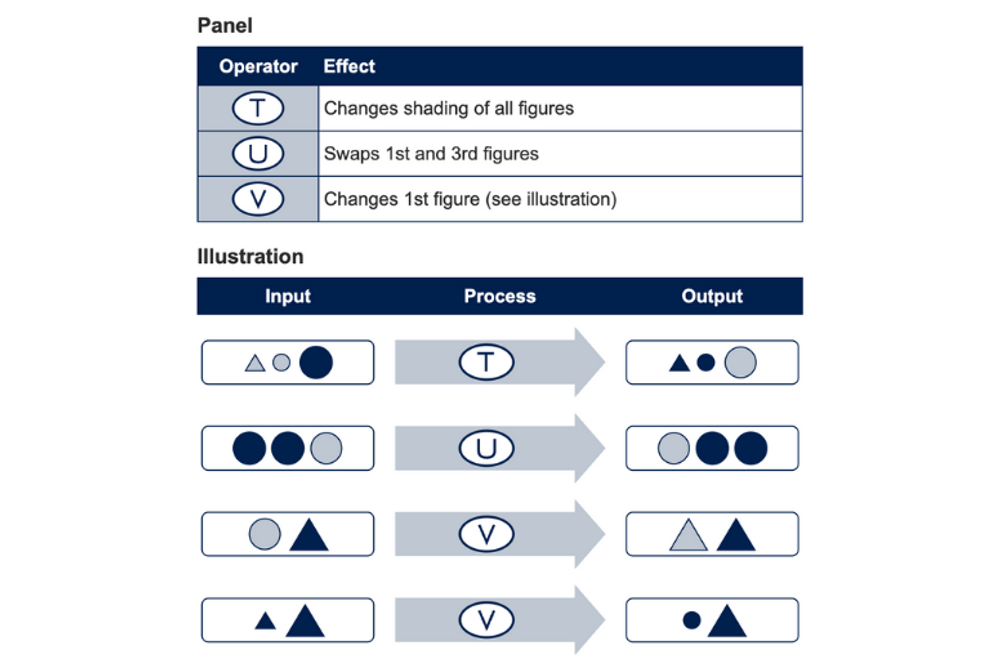
Source: Saville Assessments
Example question
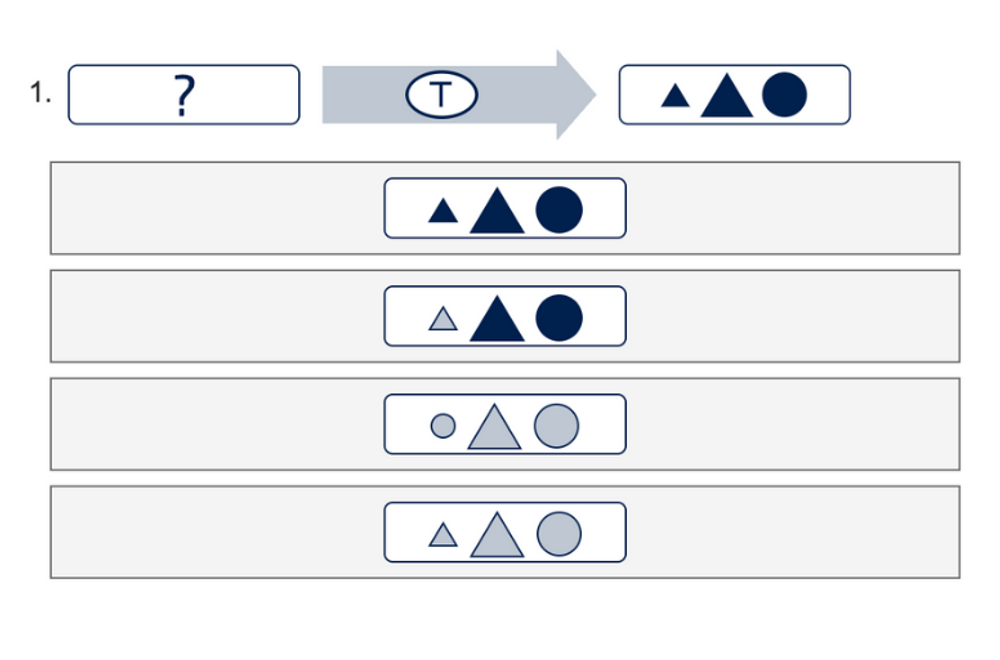
Source: Saville Assessments
Answer: The last option
Explanation:
The effect of “T” is to change the shading of all figures.
Therefore, the 3 shapes before the alteration must be in light color.
Practice question
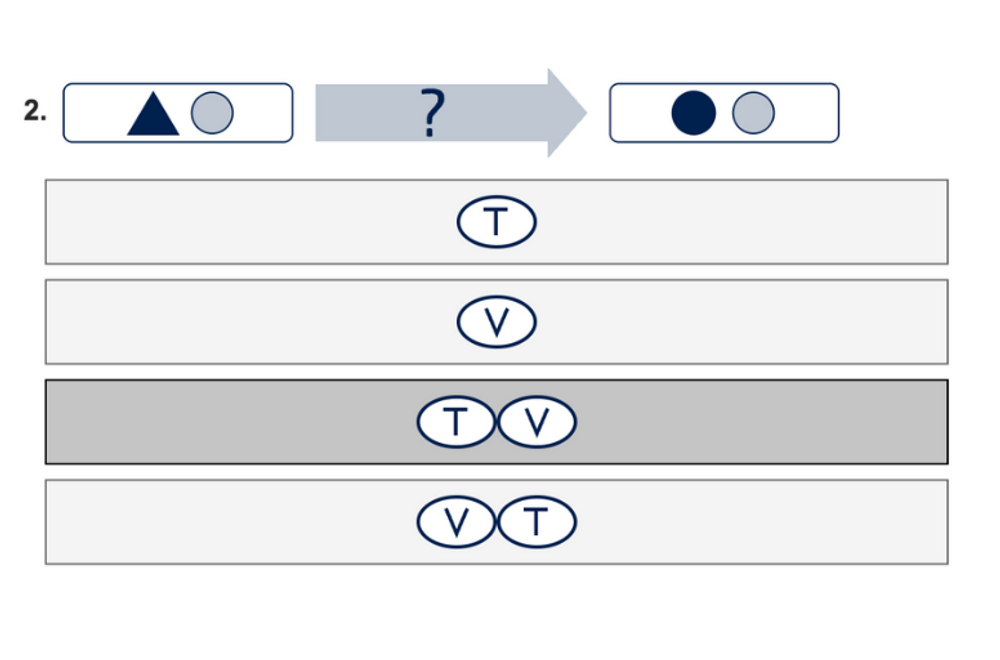
Source: Saville Assessments
Answer: The second option
Explanation:
There is one alteration after the process: the shaded round replaces the shaded triangle.
As shown in the given rules, it is the effect of “V”.
So, the correct answer is the second option.
Abstract reasoning questions
Example question
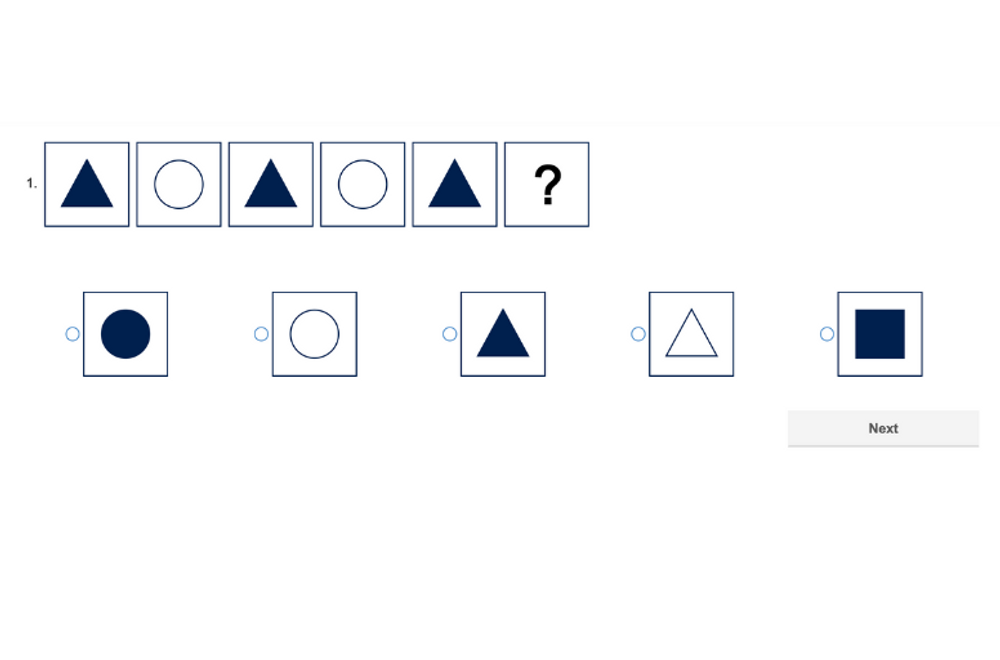
Source: Saville Assessments
Answer: The second option
Explanation:
The shaded triangle appears in 1st, 3rd, 5th,… positions, while the circle is only in 2nd, 4th,…
Therefore, the 6th position will be an unshaded circle.
Practice question
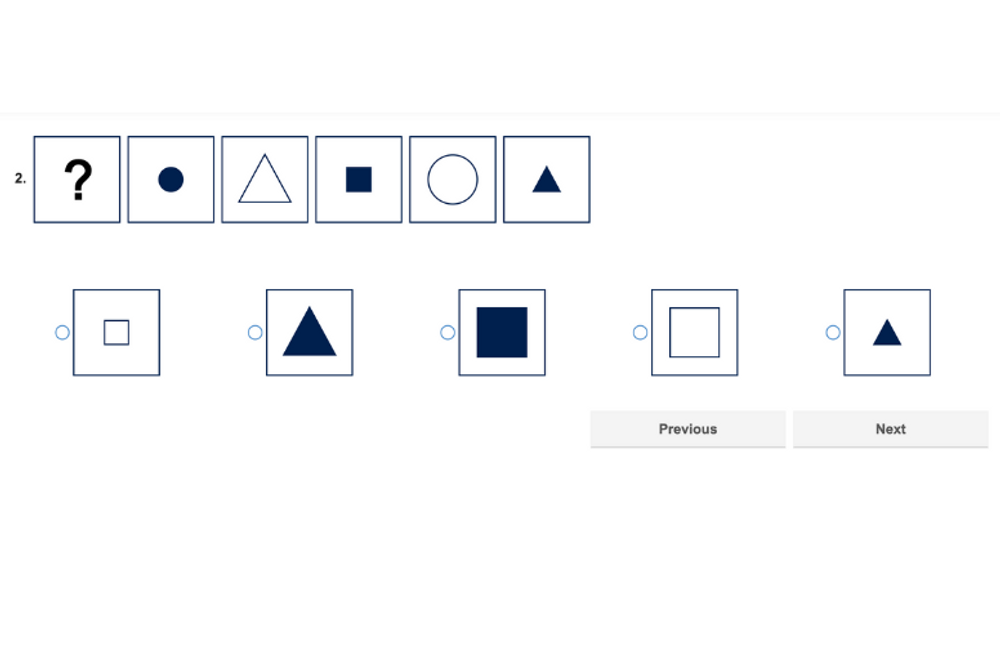
Source: Saville Assessments
Answer: The fourth option
Explanation:
Rule 1: Each shape (round, triangle, square) appears twice in the sequence.
Rule 2: The large figures are in 1st, 3rd, 5th positions, while smaller ones occur in 2nd, 4th, 6th.
Rule 3: The large figures are unshaded, while smaller ones are colored.
So, the correct answer will be the unshaded square.
Spatial reasoning questions
Example question
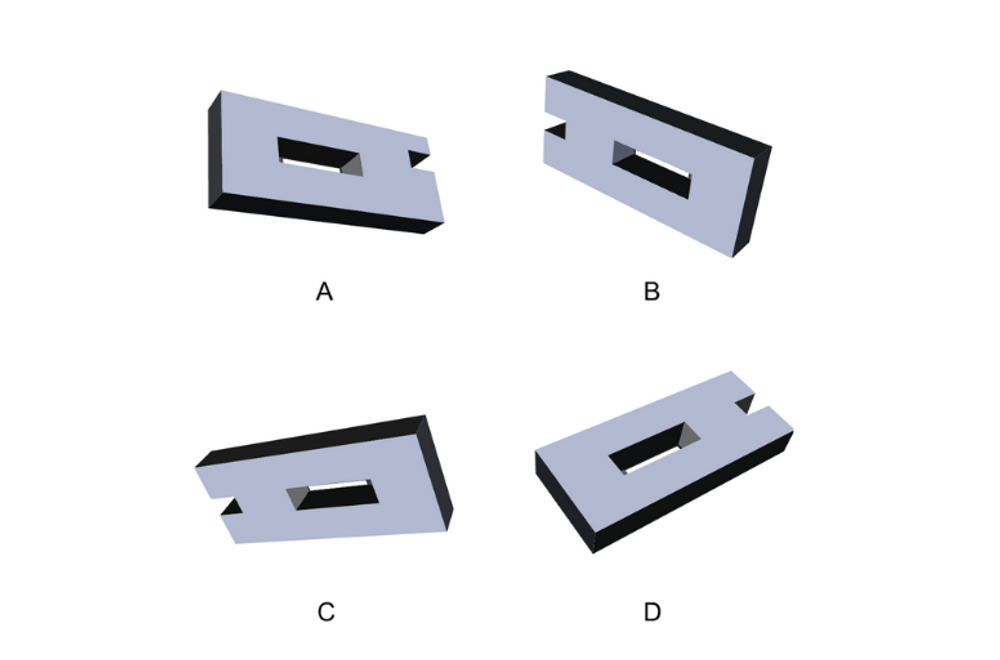
Source: Saville Assessments
Which one of the objects is different in shape from the other three?
A. A
B. B
C. C
D. D
Answer: A
Explanation: The 3 options “B”, “C”, and “D” have a hole in the middle of the bottom edge, while the hole in option “A” is skewed one side.
Practice question

Source: Saville Assessments
Which one of the objects is different in shape from the other three?
A. A
B. B
C. C
D. D
Answer: C
Explanation: The hole in option “C” is smaller than the others.
Error checking questions
Example question

Source: Saville Assessments
Please select the option, or options, which apply.
A. The entire item is correct.
B. There is an error in the Company Name.
C. There is an error in the Serial Number.
D. There is an error in the Type.
E. There is an error in the Date.
Answer: E
Explanation: The correct date is 06/08.
Practice question
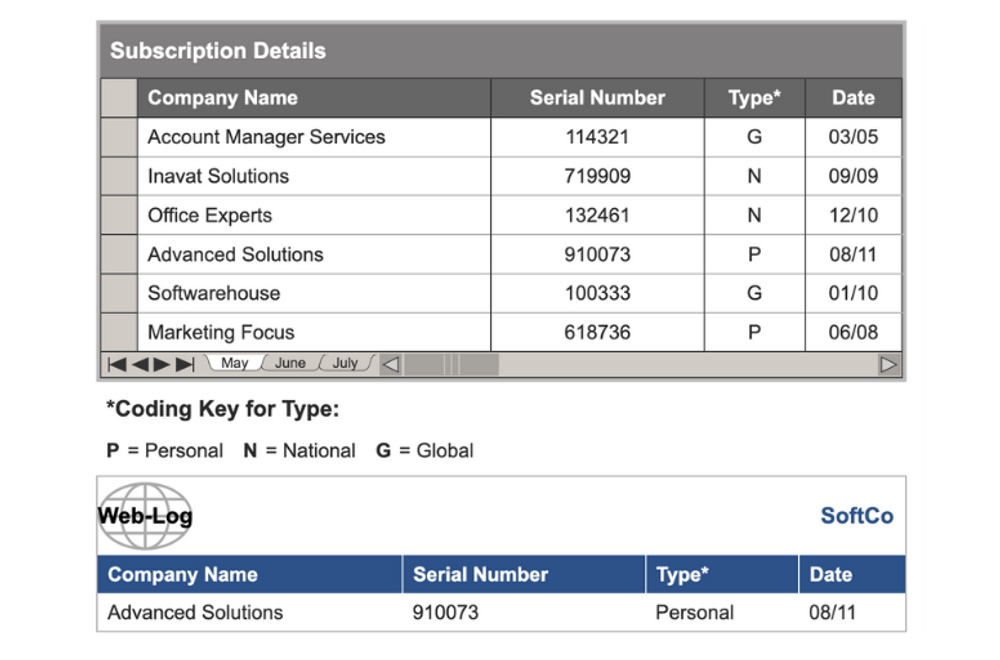
Source: Saville Assessments
Please select the option, or options, which apply.
A. The entire item is correct.
B. There is an error in the Company Name.
C. There is an error in the Serial Number.
D. There is an error in the Type.
E. There is an error in the Date.
Answer: U
Other Saville assessments
Other Saville Assessments besides Aptitude Tests include
- Situational Judgment Tests. An assessment package consists of branded workplace scenarios that measure candidate suitability to specific working environments.
- Match 6.5 and Work Strengths are powered by Wave. This is one of Saville Assessment’s flagship questionnaires that dives deeper into an individual’s personality to predict workplace performance and success potential.
- Online Job Profiler. This 10-min online questionnaire is designed to gather perspectives from a range of key factors on what ‘good’ looks like.
- Wave® Professional Styles & Focus Styles. There are two versions of Wave assessments offered by Saville Assessments: 35-min and 13-min personality questionnaires. Employers adopt this test to accurately predict workplace performance and the potential of prospects.
Which companies use Saville assessments?
There are a large number of companies and employers adopting Saville Assessments in their pre-employment process. The list includes the following names:
- Mercedes-Benz
- Danske Bank
- Johnson & Johnson
- Emirates Airline
- Unilever
- Deloitte
- Nestle Jaguar
- Land Rover
- McKinsey
- NHS
- L’oreal
- PwC
- University of Greenwich
Prepare for Aptitude Tests With MConsultingPrep
Discover MConsultingPrep’s Aptitude Test practicing platform with
- A question bank of 1400+ aptitude questions (Numerical, Verbal & Logical)
- A comprehensive explanation of every question
- Evaluation and recording tools for performance reviews
With our test packages, you can practice more strategically and gain more confidence for every test question you might encounter in your future aptitude tests.
Our extensive aptitude question bank covers a large number of item variations in Aptitude Tests in the pre-employment process across different companies & businesses. With questions categorized in types, you can leverage your preparation by
- Focusing on practicing questions in specific types
- Improving your performance in questions that you struggle with
With evaluation tools coming in handy, you have better insights into your overall performance, what you excel at, and what you need improvements on.

/filters:quality(75)//case_thumb/public/1699589977462_aptitude_tests_package_4_x.png)